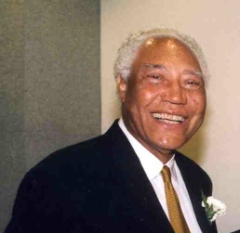
Minority, female TV owners disappearing
by Jesse J. Lewis, Sr.
Before I mention the study done three to four years ago by McGannon Communication Research Center, regarding female owners of TV stations, I would like to mention the fact that Leroy Galliard, Dr. James Montgomery, Oscar Hyde and myself were the owners of Channel 42 TV station for almost six months. This was the same group that founded the American National Bank. We were approved by the FCC and that depended on a background check and the dollar amount we had to put up for the purchase.
The money was in place and they had just finished the background checks. We had all passed the scrutiny. About 20 days before every aspect was supposed to be finalized, Oscar Hyde, who was the Chairman, was indicted and the rest is history regarding Channel 42.
The Federal Communications Commission (FCC) is poised to eliminate longstanding limits on media ownership. These changes could have a tremendous negative impact, especially on broadcast outlets owned by women and minorities. The pressures of consolidation and concentration brought on by bad decisions have crowded out minority owners, who tend to own just a single station and find it difficult to compete with their big-media counterparts for programming and advertising revenue.
The Third U.S. Circuit Court of Appeals chastised the FCC for ignoring the issue of female and minority ownership. But since 2003, the FCC has done very little to address the issue. The FCC has abdicated its responsibility to monitor and foster increased minority and female broadcast ownership. In fact, the Commission cannot account for the actual state of female and minority ownership.
This report provides the first complete assessment and analysis of female and minority ownership of full-power commercial broadcast television stations. The purpose of this study is to provide the public, Congress and the FCC with a complete understanding of the state of female and minority television ownership, as well as the potential impacts of changes to media ownership rules.
The findings of the study:
• Women comprise 51 percent of the entire U.S. population, but own a total of only 67 stations, or 4.97 percent of all stations.
• Minorities comprise 33 percent of the entire U.S. population, but own a total of only 44 stations, or 3.26 percent of all stations.
• Hispanics or Latinos comprise 14 percent of the entire U.S. population, but only own a total of 15 stations or 1.11 percent of all
stations.
• Blacks or African Americans comprise 14 percent of the entire U.S. Population, but only own a total of 16 stations, or 1.3 percent
of all stations.
• Asians comprise 4 percent of the entire U.S. population but only own a total of six stations, or 0.44 percent of all stations.
• Non-Hispanic White owners controlled 1,033 stations or 76.6 percent of all stations.
The state of female and minority ownership in the broadcast sector is even more shocking compared to other industries. While female and minority ownership has advanced in other sectors since the late 1990s, it has gotten worse in the broadcast industry.
• Women owned 28 percent of all non-farm businesses in 2002, but currently own less than 5 percent of commercial broadcast
television statins.
• Minorities owned 18 percent of all non-farm businesses in 2002, but currently own approximately 3 percent of commercial
broadcast television stations.
• In sectors such as transportation and health care, all minority groups own businesses at or near their proportion of the general
population. But in the TV broadcast sector, the two largest groups – African-Americans and Latinos – barely own 1 percent of
stations.
• The level of minority ownership in the general non-farm sector rose 23 percent from 1997 to 2002, however, from 1998 to 2006
the level of minority broadcast TV ownership dropped.
Our analysis suggests that minority-owned stations strive in more competitive, less concentrated markets. Even if the size of the market is held constant, markets with minority owners are significantly less concentrated than markets without minority owners. Though the national aggregate ownership data is telling, data at the local market level shows an even starker picture. Minorities are vastly under represented at the Designated Market Area (DMA) level, even in areas where minorities are the majority.
The FCC should seriously consider the effects on minority owners and viewers before it moves to enact policies that will lead to increased market concentration. The implications of this study should be clear: further industry consolidation will diminish the number of minority- and female-owned stations. If just a handful of female and minority-owned stations were lost to consolidation, these already anemic numbers would fall precipitously.
e-mail: jjlewis@birminghamtimes.com


